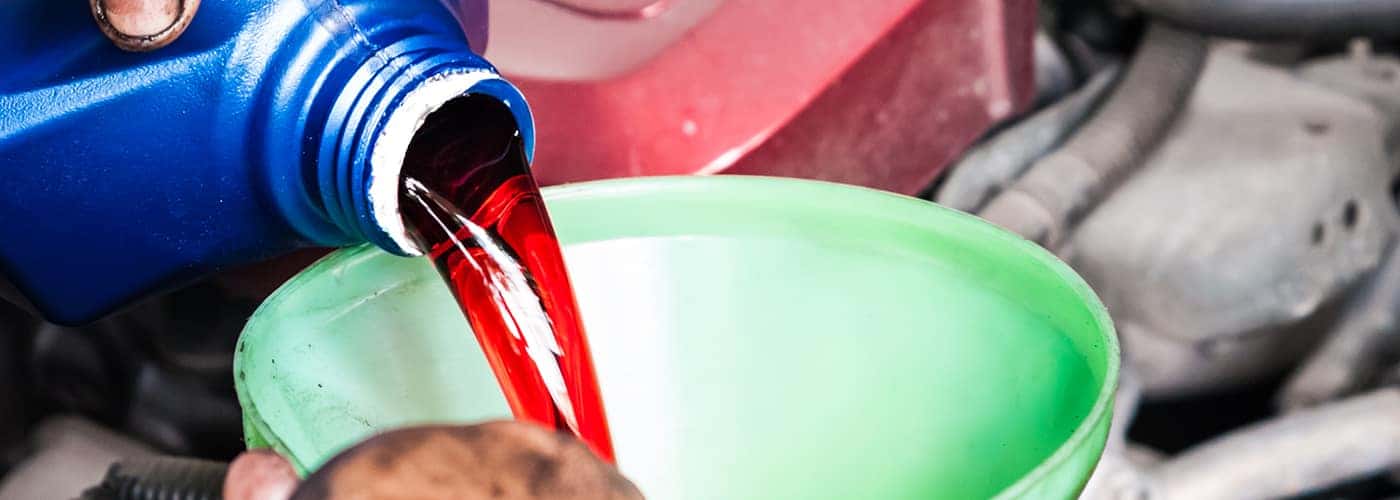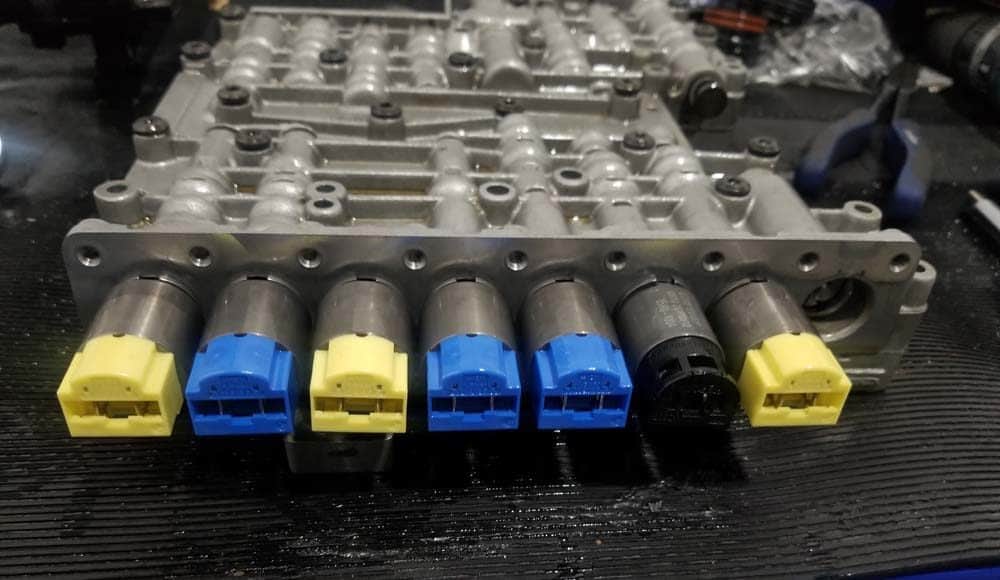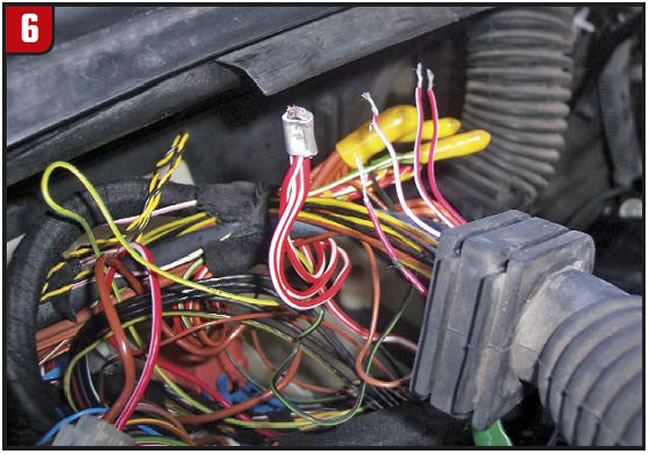The “Transmission Failsafe Program” warning on a BMW X5 indicates that the vehicle’s computer system has detected a fault in the transmission or its related systems. This model is designed to allow the vehicle to be driven to a safe location or to a mechanic, but it should not be driven extensively in this state.
Method 1: Throttle Pedal Hold
- Ensure the Engine is Off: The engine should not be running during this procedure.
- Hold Down the Throttle Pedal: Press the throttle pedal (gas pedal) all the way down.
- Wait for the Beep: Keep the pedal pressed until you hear a beep from the transmission. This should take at least 25 seconds.
- Release the Pedal: After hearing the beep, release the throttle pedal.
Method 2: Push Start with Accelerator Hold
- Ensure the Engine is Off: The engine should not be running.
- Do Not Touch the Brake or Key: Make sure you don’t press the brake pedal or use the key during this procedure.
- Hold Down the Accelerator: Press the accelerator (gas pedal) all the way down and hold it.
- Hold for 10 Seconds: Keep the pedal pressed for at least 10 seconds.
- Press the Start Button: While still holding the accelerator, press the start button on the vehicle.
- Release the Pedal: After pressing the start button, release the accelerator pedal.
- Wait for 2 Minutes: Allow the vehicle to sit for 2 minutes without any interaction.
- Start the Car: Turn on the engine and check if the transmission response is back to normal.
- You Can See: How to Reset Transmission Control Module Ford F150
Transmission Failsafe Program Symptoms & FIX
Additional Considerations for Transmission Failsafe Program Reset
Diagnostic Scan: Before attempting any reset methods, it’s advisable to run a diagnostic scan using a suitable OBD-II scanner. This tool can provide specific error codes that can help pinpoint the exact issue with the transmission. Understanding the root cause can guide you on the best course of action.
Temporary Solution: Reset methods are often temporary fixes. Even if the warning disappears after the reset, it’s crucial to address the root cause of the problem. Ignoring persistent issues can lead to more significant transmission damage in the long run.
Battery Reset: Another method sometimes suggested in forums is to disconnect the vehicle’s battery for a short period, then reconnect it. This action can reset the vehicle’s electronic systems, potentially clearing the warning. However, be cautious as this can also reset other vehicle settings.
Fluid Levels and Quality: Regularly check the transmission fluid level and its quality. Dirty or low transmission fluid can cause various issues. If the fluid is dark or has a burnt smell, it might be time for a change.
Professional Consultation: While online forums can offer a wealth of knowledge and shared experiences, it’s always best to consult with a BMW specialist or a professional mechanic when dealing with critical vehicle systems like the transmission. They can provide expert advice tailored to your vehicle’s specific condition.
Safety First: If you choose to try any reset methods, ensure you’re in a safe location, away from traffic. It’s also a good idea to have someone with you for safety reasons and to assist if needed.
Common Causes of the Transmission Failsafe Mode
If your BMW X5 suddenly displays the ‘Transmission Failsafe’ warning, don’t panic. This simply means the transmission has detected a problem and has gone into ‘limp mode’ to protect itself.
The good news is there are a few easy steps you can take to reset the transmission and get your X5 back up and running.
Transmission Overheating
Excessive heat can cause the transmission fluid to break down, leading to reduced lubrication and potential damage to internal components. Many modern vehicles have temperature sensors that can trigger failsafe mode when the transmission fluid temperature rises above a safe threshold.
Low Transmission Fluid

Insufficient transmission fluid levels can result in inadequate lubrication and cooling, leading to friction and heat buildup. This can trigger the failsafe mode to protect the transmission from further damage.
Faulty Transmission Solenoids

Transmission solenoids are responsible for controlling the flow of transmission fluid to different parts of the gearbox. When a solenoid fails or becomes stuck, it can disrupt the normal operation of the transmission, prompting the vehicle to enter failsafe mode. Here Transmission solenoids test Video
Sensor Issues

Modern transmissions rely on various sensors to monitor speed, fluid pressure, and other parameters. If one of these sensors malfunctions or provides erroneous readings, the vehicle’s computer may activate failsafe mode to avoid potential damage.
Electrical Problems

A faulty electrical connection or wiring issue within the transmission system can disrupt communication between different components, leading to abnormal transmission behavior and the activation of failsafe mode.
Mechanical Failures
Mechanical issues within the transmission, such as worn clutches, damaged gears, or a failing torque converter, can trigger failsafe mode to prevent further damage.
Faulty TCM (Transmission Control Module)
The TCM is the onboard computer responsible for controlling the transmission’s operation. If the TCM malfunctions or experiences a software-related problem, it may activate failsafe mode as a precautionary measure.
Malfunctioning Torque Converter

The torque converter is responsible for transferring power from the engine to the transmission. A failing torque converter can cause excessive slippage and generate heat, prompting the vehicle to enter failsafe mode.
Fluid Contamination

Contaminated transmission fluid with debris, metal particles, or dirt can lead to clogged passages and impaired transmission function, potentially causing failsafe mode to activate. More information Video.
ECU/PCM (Engine Control Unit/Powertrain Control Module) Issues
The engine and transmission systems are often interlinked. Problems with the engine’s control module can sometimes affect transmission performance, leading to the activation of failsafe mode.
If your vehicle goes into failsafe mode, it is essential to address the issue promptly to avoid further damage to the transmission.
You should refrain from driving the vehicle aggressively in this mode and have it inspected by a qualified mechanic as soon as possible.
How to Identify if Your X5 Is in Transmission Failsafe Mode
If your BMW X5 suddenly seems to be hesitating or shifting roughly, the transmission failsafe program may have been activated.
This is designed to protect your transmission, but it also means you’ll need to perform a reset to get back to normal driving.
Here’s how to identify if your X5 is in transmission failsafe mode and how to perform the necessary reset.
How to Tell if Your X5 is in Failsafe Mode
There are a few signs that will indicate your X5 has activated the transmission failsafe program:
- The “Transmission Failsafe Prog” message will display on your instrument cluster.
- The transmission will remain in one gear, usually 3rd or 5th, and not shift properly. This results in the engine revving higher than normal and a lack of power.
- The transmission malfunction indicator light (which looks like a gear) will come on.
- You may experience hard or delayed shifts, shuddering or vibration, or the transmission not shifting at all.
- Your X5 may go into “limp mode” with reduced engine power to protect the transmission. In limp mode, top speed will be limited to around 30-50 mph.
- Trouble codes related to the transmission like P0700, P0715, or P0720 may be stored and displayed on a diagnostic scan tool.
Precautions to Take Before Resetting the Transmission
Before attempting to reset the transmission failsafe program in your BMW X5, there are a few precautions you should take.
Charge the Battery Properly
Make sure your X5’s battery is fully charged. Resetting the transmission failsafe program requires connecting to your X5’s OBD2 port, and you’ll need a strong battery to complete the process. If your battery is over 3 years old or not holding a charge well, consider replacing it before proceeding.
Take All the Necessary Tools
Gather the necessary diagnostic tools. You’ll need an OBD2 scanner that can access BMW’s proprietary codes and systems. Many inexpensive generic scanners cannot. You’ll also want a digital multimeter to check various sensors.
Check the Fuel Level
Inspect your X5’s transmission fluid level and condition. Low or dirty fluid could trigger the failsafe mode and needs to be addressed first. Check that the fluid is at the proper level on the dipstick and that it’s bright red and translucent, not dark or opaque. Add or change the fluid as needed before resetting the transmission.
Look at the Fault Codes
Check for any stored fault codes. Connect your OBD2 scanner and check for any pending or stored codes related to the transmission. Clear any codes before resetting the failsafe program. Faulty parts or sensors need to be addressed to avoid the failsafe mode activating again shortly after resetting it.
Check for Any Leaks or Damage
Inspect your X5 for any visible transmission leaks or damage. If you notice fluid on the ground under your vehicle or see any cracks or holes in the transmission case, do not attempt to reset the failsafe program. Have the transmission inspected by a certified BMW mechanic as soon as possible?
Look for your Mechanism
Double-check that your X5’s shifter mechanism is working properly. Ensure the shifter moves smoothly into all gears and that it returns to the center position when released. A faulty shifter can also trigger the transmission failsafe program.
Do I Need to Service the Transmission After Resetting?
Now that you’ve successfully reset the transmission failsafe program in your BMW X5, it’s a good idea to have the transmission serviced as soon as possible.
The failsafe program activates when the vehicle’s computer detects an issue with the transmission that could cause damage if left unaddressed.
Resetting the failsafe program will get you back on the road, but it does not fix the underlying problem.
It’s best to schedule a service appointment with your local BMW dealer or a certified transmission shop to diagnose and repair the transmission.
Do You Need a Transmission Flush?
One of the first things the technician will determine is whether a transmission flush is needed. A flush involves draining the old, degraded transmission fluid and replacing it with new fluid.
Over time, transmission fluid breaks down and loses its ability to properly lubricate parts, cool the transmission, and transfer power.
A flush removes metal shavings, sludge, and other contaminants from the transmission, which can help prevent overheating and other issues.
If it’s been more than 60,000 miles since your last transmission service, a flush is typically recommended. The technician can examine the drained fluid to check for any signs of damage or wear before refilling the transmission with new, clean fluid.
A flush may also be suggested if the failsafe program was activated due to overheating or a drop in fluid level. It’s best to follow the technician’s recommendation regarding a transmission flush for your BMW X5.
Other Potential Transmission Repairs
In some cases, a transmission flush may not fully resolve the problem and additional repairs could be needed. Some possibilities include:
Valve Body Replacement- The valve body controls fluid flow and pressure in the transmission. If faulty valves are detected, the valve body may need to be replaced.
Solenoid Replacement- Solenoids are electrohydraulic valves that control transmission function. Faulty solenoids can affect shifting, torque converter lockup, and line pressure.
Seal or Gasket Replacement- Worn or damaged seals and gaskets can allow fluid to leak, which may have triggered the failsafe program. Replacing these components will help ensure proper fluid levels and pressure.
Transmission Rebuild- If there are signs of internal damage or extensive wear, a complete transmission rebuild may be recommended to restore proper function and avoid future transmission failure.
Transmission Replacement- As a last resort, the transmission may need to be replaced if the damage is too extensive or costly to repair. A remanufactured or rebuilt transmission can get your X5 back on the road.
Servicing your BMW X5’s transmission after resetting the failsafe program is critical to determining the underlying issue, performing necessary repairs, and avoiding future problems that could lead to permanent transmission damage. It’s best to
Can I Drive the Vehicle After Resetting the Transmission?
After resetting the transmission failsafe program in your BMW X5, it’s normal to wonder if it’s safe to drive. The good news is, in most cases, it is fine to continue driving as usual. However, there are a few things you should keep in mind:
Take it Slow at First
When you first start the vehicle after the reset, the transmission will need to re-adapt to your driving style and habits. It’s best to take it easy for the first 15-20 minutes of driving. Avoid aggressive accelerating or braking, and any sudden changes in speed or direction. This will allow the transmission time to calibrate properly.
Check for Warning Lights
Pay close attention to your instrument cluster for any warning lights that come on, especially the transmission warning light.
If it illuminates again within the first day or two of driving, it could indicate there is still an ongoing issue with the transmission that needs to be diagnosed and repaired.
It’s best to have the vehicle checked by a certified BMW mechanic as soon as possible.
Notice Any Strange Noises or Sensations
Be on alert for any strange noises, vibrations, or sensations coming from the transmission. Grinding, squealing or whining sounds are cause for concern and the vehicle should be serviced immediately.
The transmission should shift smoothly and quietly through all gears. If there are delays, hesitations or ‘hard shifts’ between gears, that could also indicate a transmission fault.
Re-scan the Transmission Control Unit
If the transmission problem returns or a new symptom develops within a week of resetting the failsafe program, it’s a good idea to have the transmission control unit re-scanned for any fault codes.
There may be an underlying issue that was not detected during the initial scan and reset. It’s best to have BMW-trained technicians perform a complete and proper diagnosis to determine if any repairs are needed.
Frequently Asked Questions
What could trigger the Transmission Failsafe warning?
Several issues can prompt this warning, ranging from low transmission fluid, faulty sensors, electrical problems, or even internal transmission damage.
Can I continue to drive my BMW X5 when the Failsafe warning is on?
While the failsafe mode is designed to allow you to drive the car to a safe location or to a mechanic, it’s not recommended to drive the car any longer than necessary when this warning is present. The vehicle might not operate normally, and further driving can cause additional damage.
How is the “Transmission Failsafe” issue diagnosed?
A certified technician will typically connect a diagnostic tool to your vehicle’s OBD (On-Board Diagnostics) port. This tool will retrieve any stored fault codes which can provide insights into the cause of the issue.
Can I reset the “Transmission Failsafe” warning myself?
While it’s possible to clear the warning temporarily using some OBD tools, this does not fix the underlying issue. If the problem persists, the warning will likely return. Always consult with a professional to address the root cause.
Is it expensive to fix a “Transmission Failsafe” issue?
The cost can vary widely based on the root cause. It might be a relatively inexpensive sensor replacement or could involve more extensive repairs to the transmission. A thorough diagnosis is essential to determine costs.
Conclusion
The “Transmission Failsafe” warning on a BMW X5 is a critical signal indicating potential issues with the vehicle’s transmission or related systems. While it’s natural to seek immediate solutions, especially in today’s era of readily available information and DIY guides, it’s paramount to approach such warnings with caution and due diligence.
Addressing these issues is not merely about rectifying a dashboard alert but ensuring the long-term health, efficiency, and safety of the vehicle. It’s vital to prioritize professional diagnostics and solutions, as these not only ensure the longevity of the car but also the safety of its occupants.
In automotive concerns, as with many matters, prevention is often more valuable than a cure. Regular maintenance, timely interventions, and informed decision-making can avert more significant problems down the road.
See Also:


